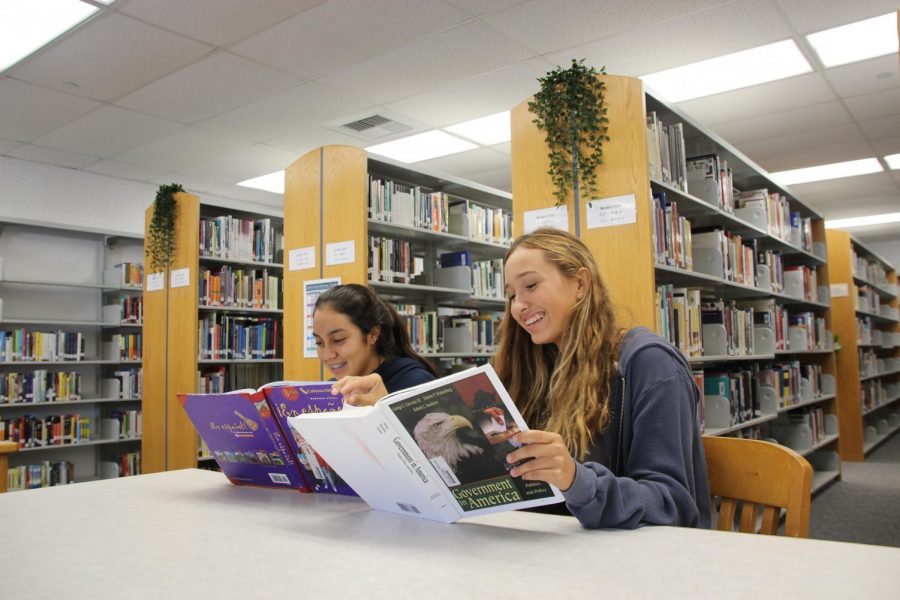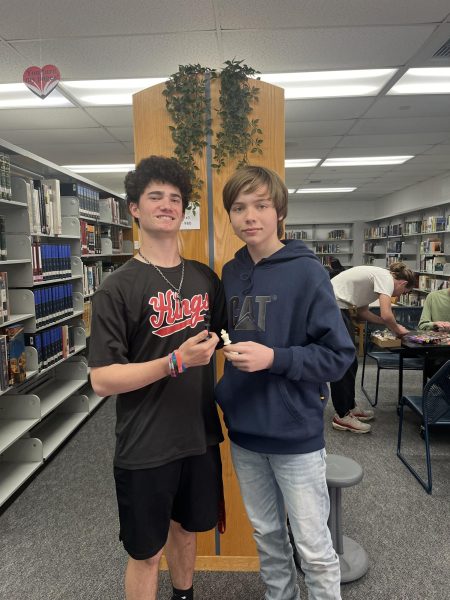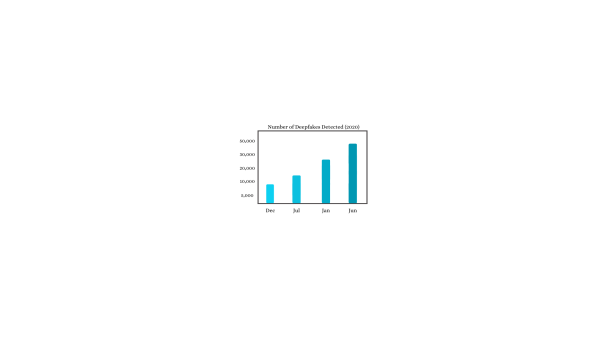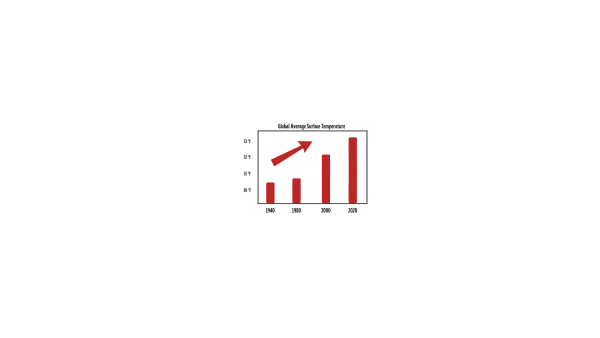Teachers Working Beyond Textbooks
Teachers continue to adapt to new technology and other methods of teaching when textbooks don’t make the cut.
Juniors Shannon Aguilar and Ryan Ammann prepare for upcoming exams in the library.
As PVHS students return for the new school year, they are greeted by the same outdated textbooks that have aged into a worse condition.
For a number of years, students have utilized the old textbooks provided by the school library, but are now faced with conflict as many teachers are neglecting to use these books.
More teachers year after year are now transitioning from a textbook-based class to a more a digitally-centered class.
Teachers like Louis Harley and Patrick O’Brien are now looking for new ways to teach their AP classes.
In particular, AP classes over the years have been forced find alternative sources of information that are suitable for the constant changing of the AP exam.
O’Brien recently transitioned his classes to use alternative resources to effectively teach his students with more modern materials.
Although these can be beneficial, new textbooks are a priority, but are still out of reach.
“It is something they should address, but I think it just takes teachers being a little creative… with the technology that the school does give us access to, there are resources at our hands that we can supplement what the book lacks,” said O’Brien.
While many teachers chose to disregard the textbooks, some develop their own compromise to include the textbook curriculum as well as introduce outside information to interest their classes.
English teacher Cynthia Damon continues to use the school textbooks but pairs it with current events to further engage students.
Damon chooses to only photocopy the pieces she uses so students don’t have to carry around heavy textbooks.
“I think the kids really respond well to works that aren’t ancient,” Damon said.
“I like to integrate my own curated clips that support what we are discussing from art or films that have to do with our topics or themes.”
Sophomore CJ Haddad experienced a year without a textbook for her AP history class and has come to appreciate a class structured in this style.
“It makes it easier because I can zero in on one thing to study, rather than looking in the book, then into my notes, and then into other stuff,” Haddad said.
On the contrary, Harley understands the benefits of classroom material from digital sources, but asserts that “a good modern textbook would be great.”
As Harley has taught various AP history classes, he personally has had to deal with the consequences of aged textbooks in several subjects.
For all the history AP tests, one portion of the exam is the long essay question (LEQ) which can account for 15% of the AP test score. Regardless, all history textbooks for the AP courses do not contain practice LEQ’s to prepare for the exam, which has left teachers and students in a difficult position.
History teachers Dane Hill and Christina Varela are supplementing the course with summary books and packet systems.
For example, the Government book was written during the Clinton administration and the school received the European History book when the current freshman class was a year old.
“History doesn’t change but the focus of it does,” Harley said.
While teachers must deal with outdated textbooks, librarian Ashley Brockman explained more clearly what it takes for teachers to receive new textbooks.
“Now theoretically every department is on a cycle of adoption… and the adoption cycle is three to four years long. Somehow, the middle schools always go through adoption first it seems before the high schools,” Brockman said.
Even though many teachers year after year are unable to go through the adoption cycle of textbooks, last year Spanish teacher Cecilia Remeta and Brockman worked together to get new Spanish textbooks for Spanish 4.
These books will be a greatly appreciated addition to the Spanish 4 classes, because the textbooks utilized before were published in 1999.
Overall, the district and administrators control the process of who obtains new textbooks.
Although outdated textbooks have been an ongoing issue for years, teachers have done a superb job in utilizing other resources and making sure their students still have access to current information.
This ensures that their classes do not become outdated, but remain current and on trend to heighten students’ experiences.









